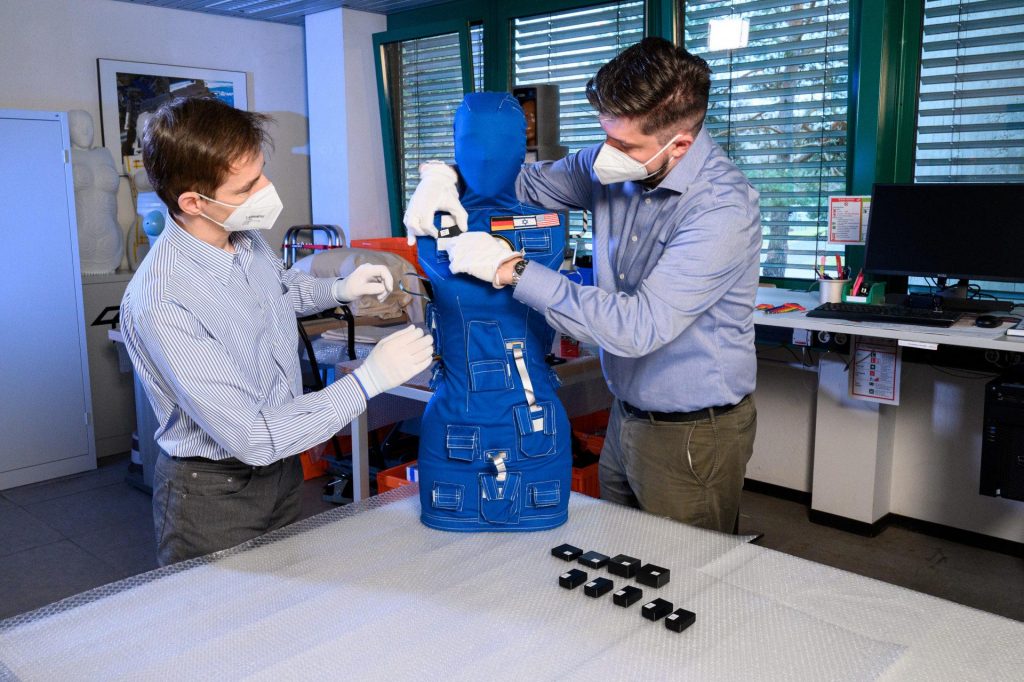The specially trained astronaut Shaun the Sheep has been assigned a seat on the Artemis I mission to the Moon. This series of ESA blog posts covers Shaun’s training and preparations leading up to launch.
Astronauts on space missions have to be ‘Jacks-of-all-trades’ (or Jills). Shaun the Sheep is no exception and, like any space traveller, he was trained with the astronauts’ toolbox of knowledge for the first Artemis mission. This included life and physical sciences in ‘weightless’ conditions, engineering and medical skills, as well as orbital mechanics and survival training.
Hands-on European science
To learn how to monitor all the experiments and keep a space lab running, astronauts from around the world receive hands-on (or hoofs-on) training in mockups at the European Astronaut Centre – the home-base for European astronauts in Cologne, Germany.

The centre has a variety of training tools and facilities to support crew training. Astronauts can rehearse normal operations, learn to recover from malfunctions and practice to replace faulty equipment on board.
Shaun the Sheep was trained in a full-size mock-up of the Columbus laboratory. Columbus is Europe’s largest contribution to the International Space Station. Since 2008, this multifunctional module has been producing a wealth of scientific data across a range of disciplines.
The ESA training team in Cologne put Shaun through his paces, getting him to know every corner of Europe’s Columbus lab as a good basis for the Artemis I mission.

Radiation ride
There will be more passengers from Europe sharing the lunar ride with Shaun the Sheep. Their names are Helga and Zohar and their female-shaped, plastic bodies are filled with over 5600 sensors each to measure the radiation load during their trip around the Moon.
Cosmic radiation is considered the main health hazard for any living thing – humans or animals – on exploration missions. Far away from the protection of Earth’s magnetic field, the radiation doses could be up to 700 times higher than on our planet.
Shaun will endure the radiation dose of the Artemis I lunar flyby with the radiation sisters Helga and Zohar. Around 5600 tiny crystals are distributed within each mannequin to help map the radiation impact within the body. Similar dummies are used in hospitals to quantify the right dose of radiation for cancer therapies.

A set of European sensors is also riding on the Orion capsule to map the radiation environment. These ESA Active Dosimeters will allow scientists to see as accurately as possible how the radiation fluctuates during the mission.
Radiation research in space is nothing new, and this has always been a challenge for human exploration. Away from our planet, cosmic radiation could increase the risk of cancer and trigger degenerative diseases.
With the help of Shaun the Sheep and the lunar twins, ESA wants to protect the health of future crews on their way to the Moon and beyond.

 Automated Transfer Vehicle page
Automated Transfer Vehicle page ATV blog archive
ATV blog archive
Discussion: 10 comments
Excellent! ? And nicely written ☺️
Lovely ride to the Moon for Shaun the Sheep & the lunar twins!
Ad Luna!
I would have liked to see Shaun being accompanied by Bitzer ?
Muito bom acompanhar os preparativos. Vai dar tudo certo com o Shaun a bordo, com certeza já aprendeu tudo.
Estamos torcendo por todos da missão!
Possibly training for his next role as 007 in Moonraker II ?
Does Shaun have any comments on yesterday’s cancellation?
Love from Jane who lives in the sheep capitol of the world, Wales
Me is wondering too. And is he stuck in Florida or back on farm whilst he waits?
Siempre Fiel
So interesting. So has there already been previous tests using male dummies?
Would like to hear Shaun’s views on his upcoming trip.
Yes Veronica, there has been similar studies on the International Space Station using a male shaped mannequin called Matroshka. Matryoshka measured human mannequin inside and outside the space station. More info here: http://wsn.spaceflight.esa.int/docs/Factsheets/19%20Matroshka%20LR.pdf
The marginal increments made towards having a fully habitable and self sustaining space station are always pleasing to hear. Despite having given up on having a bigger, more advanced, and truly International Space Station, I am hopeful we will still continue to make meaningful progress towards the ultimate goal of space exploration.
http://www.rohanjolly.com/ideas/international-space-station